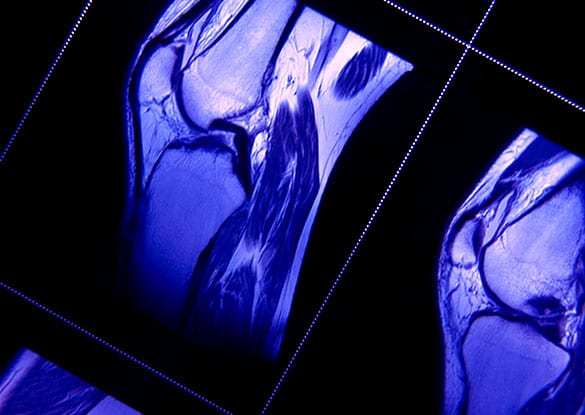
An experienced knee surgeon can quickly get you back on your feet.
Whether it’s heat and ice applications and anti-inflammatory medications or strengthening exercises, massage therapy, and injections, the first attempts at easing knee pain typically involve non-surgical treatments. It’s when such efforts aren’t effective, or when discomfort is severe and affecting mobility, that a knee surgeon in Los Angeles may discuss surgical options with a patient.
- The specific procedure recommended will depend on the nature of the problem, the location of the affected structures, the extent of the damage, and overall patient health.
- With most common types of knee surgery, the emphasis is on using techniques that are as minimally invasive as possible.
CONTACT US TODAY
Meniscectomy
With small meniscus tears, a partial meniscectomy may be performed. During the procedure, part of a torn meniscus is removed. An effort is made to remove as little tissue as possible, although the pattern of the tear will determine what’s removed and what’s repaired. If the entire meniscus is damaged enough to be considered beyond repair, a total meniscectomy may be necessary to remove the entire structure. If this is the case, a meniscus transplant may be done with a meniscus from a donor patient.
ACL Reconstruction
One of the four main knee ligaments, the anterior cruciate ligament keeps the shin bone from sliding in front of the thigh bone. If the ACL is damaged, it can affect knee stability. If initial ACL injury treatments aren’t effective or other ligaments and knee cartilage is damaged, ACL reconstruction can be done to restore function and correct related knee issues. Reconstruction is also often recommended for otherwise healthy younger athletes who want to maintain their optimal performance level. During the procedure, a knee surgeon in Los Angeles will replace the damaged part of the ACL with a segment of tendon from a donor or another part of the knee.


Patellar and Quadriceps Tendon Repair
Located about the kneecap, the quadriceps tendon helps the kneecap (patella) straighten and perform kicking motions. This process is referred to as the extensor mechanism. While the thick quadriceps tendon is durable and strong, it can sometimes become injured. Complete quadriceps tendon tears do not occur as often as partial tears, which are more common in athletes and active individuals. The extensor mechanism can also be affected by damage to the kneecap, such as some type of fracture. It’s complete tears and related kneecap damage that usually requires surgical intervention. Surgery typically involves reattaching the tendon by creating holes in the patella to pull the tendon to the bone. Recovery normally involves bracing and range of motion exercises.
Partial and Total Knee Replacements
A knee surgeon in Los Angeles may recommend a partial or total knee replacement if tissues and/or bones within the knee have been severely damaged from certain types of knee arthritis. In some instances, it may be possible to only replace the parts of the knee that are worn. If arthritis damage is widespread rather than localized, a total knee replacement may be the better option. It’s becoming increasingly common for partial knee replacements to be robotic assisted to further increase precision and minimize disruption nearby tissues and nerves. With a total knee replacement, bone and cartilage at the end of the femur (thigh bone) and part of the tibia (shin bone) are removed. Metal and plastic components are then used to replace the removed parts to restore knee function. The surface of the kneecap is sometimes replaced as well.
Plica Excision
During fetal development, the human knee is divided into separate compartments. These compartments disappear over time. The remnants of the tissue that formed the developing knees’ dividers is called plica tissue. Normally, this remaining tissue doesn’t cause any problems. But there are times when the leftover tissue is more prominent than in should be. When this happens, the resulting irritation, referred to as plica syndrome, may contribute to knee pain or interfere with the function of the knee itself. There are four plica folds in each knee that may be the source of the problem. If the irritation isn’t eased by anti-inflammatory drugs and therapeutic stretching exercises, an arthroscopy may be done to remove the affected tissue.
With arthroscopic knee surgery, most patients start to notice improvements within 4-6 weeks post-procedure as tissues heal and the affected knee becomes reconditioned, although it may take several months to safely resume all activities involving leg and knee movements. A knee surgeon in Los Angeles plays a role in the recovery process with follow-up visits and exams and recommendations for steps a patient can take to avoid re-injury and promote healing.




